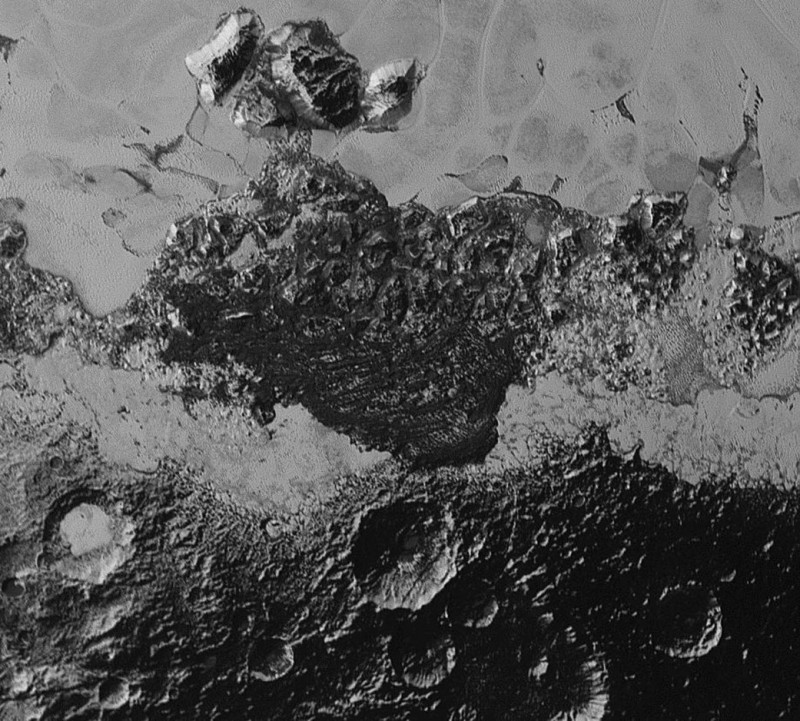Pluto’s exaggerated and wildly varying tilt may have helped give the dwarf planet rivers and lakes of liquid nitrogen and an atmosphere that, at times, has exceeded that of Mars, according to scientists studying the trove of data streaming back from the New Horizons probe.
While Earth’s seasons are the product of its 23-degree tilt, Pluto is tilted at an angle of 120 degrees and wobbles back and forth by about 20 degrees over millions of years. So, at times, much of the planet in a “tropical” zone that, despite the term, is hardly balmy.
At other times, Pluto’s arctic zones can extend nearly to its equator.
The overall average surface temperature is about minus-400 degrees Fahrenheit.
The radical variations can, at times, drive changes in Pluto’s atmosphere that could allow for flowing liquid nitrogen on the surface, explaining features that look very much like stream beds and frozen lakes, principal mission investigator Alan Stern said Monday at the Lunar and Planetary Science Conference in Houston.
At times, Pluto’s atmospheric pressure has been as much as 40 times that of Mars, despite a location 20 times farther from the sun than that of the red planet, researchers found.
The discovery “really changes your view of this little planet and how it operates,” Stern said.
The last time liquids flowed across Pluto’s surface was probably 800,000 to 900,000 years ago, according to NASA planetary science director Jim Green.
News about Pluto continues to stream in since the New Horizons probe flew past it this summer, including discoveries about its surprisingly complex geology, atmosphere and its moons.
About half of the data collected by New Horizons have been transmitted back to Earth by the probe, which is now on its way to a rendezvous with an object in the distant Kuiper Belt.
More news could come Tuesday, with a briefing scheduled by researchers on the Dawn mission to the dwarf planet Ceres — the one with the dazzling bright spots.
